On Maximal Homogeneous 3-Geometries and Their Visualization †
Abstract
:1. Introduction
- (i)
- These (commutative group of) transforms commute with the matrix of Jordan formparabolas as geodesics for this geometry.
- (ii)
- These transforms commute with the matrixwe get cubics as geodesics for this geometry.
2. Specific Geometries, and in Models
3. Crystallography in Non-Euclidean Spaces
3.1. Hyperbolic Space
3.2. Space
3.3. Space
3.4. Space
4. Conclusions
Conflicts of Interest
References
- Molnár, E. The projective interpretation of the eight 3-dimensional homogeneous geometries. Beitr. Algebra Geom. Contrib. Algebra Geom. 1997, 38, 261–288. [Google Scholar]
- Molnár, E.; Szirmai, J. Symmetries in the 8 homogeneous 3-geometries. Symmetry Cult. Sci. 2010, 21, 87–117. [Google Scholar]
- Molnár, E.; Prok, I.; Szirmai, J. The Euclidean visualization and projective modelling the 8 Thurston geometries. Stud. Univ. Zilina Math. Ser. 2015, 27, 35–62. [Google Scholar]
- Molnár, E.; Prok, I.; Szirmai, J. Classification of tile-transitive 3-simplex tilings and their realizations in homogeneous spaces. In Non-Euclidean Geometries, János Bolyai Memorial Volume, Mathematics and Its Applications; Prékopa, A., Molnár, E., Eds.; Springer: Boston, MA, USA, 2006; Volume 581, pp. 321–363. [Google Scholar]
- Molnár, E.; Szirmai, J.; Vesnin, A. Packings by translation balls in . J. Geom. 2014, 105, 287–306. [Google Scholar] [CrossRef]
- Molnár, E.; Szirmai, J.; Vesnin, A. Geodesic and translation ball packings generated by prismatic tessellations of the universal cover of SL2R. Results Math. 2017, 71, 623–642. [Google Scholar] [CrossRef]
- Molnár, E.; Szirmai, J. Classification of Sol lattices. Geom. Dedicata 2012, 161, 251–275. [Google Scholar] [CrossRef]
- Molnár, E.; Szirmai, J. Top dense hyperbolic ball packings and coverings for complete Coxeter orthoscheme groups. arXiv, 2017; arXiv:161204541v1. [Google Scholar]
- Prok, I. Classification of dodecahedral space forms. Beitr. Algebra Geom. Contrib. Algebra Geom. 1998, 39, 497–515. [Google Scholar]
- Molnár, E. Polyhedron complexes with simply transitive group actions and their realizations. Acta Math. Hung. 1991, 59, 175–216. [Google Scholar]
- Molnár, E.; Szirmai, J. On hyperbolic cobweb manifolds. Stud. Univ. Zilina Math. Ser. 2016, 28, 43–52. [Google Scholar]
- Szirmai, J. The optimal ball and horoball packings to the Coxeter honeycombs in the hyperbolic d-space. Beitr. Algebra Geom. Contrib. Algebra Geom. 2007, 48, 35–47. [Google Scholar]
- Kellerhals, R. On the volume of hyperbolic polyhedra. Math. Ann. 1989, 245, 541–569. [Google Scholar] [CrossRef]
- Szirmai, J. The densest geodesic ball packing by a type of Nil lattices. Beitr. Algebra Geom. 2007, 48, 383–397. [Google Scholar]
- Molnár, E.; Szilágyi, B. Translation curves and their spheres in homogeneous geometries. Publ. Math. Debr. 2011, 78, 327–346. [Google Scholar] [CrossRef]
- Scott, P. The geometries of 3-manifolds. Bull. Lond. Math. Soc. 1983, 15, 401–487. [Google Scholar] [CrossRef]
- Szirmai, J. The densest translation ball packing by fundamental lattices in Sol space. Beitr. Algebra Geom. Contrib. Algebra Geom. 2010, 51, 353–373. [Google Scholar]
- Cavichioli, A.; Molnár, E.; Spaggiari, F.; Szirmai, J. Some tetrahedron manifolds with Sol geometry. J. Geom. 2014, 105, 601–614. [Google Scholar] [CrossRef]
- Szirmai, J. A candidate to the densest packing with equal balls in the Thurston geometries. Beitr. Algebra Geom. 2014, 55, 441–452. [Google Scholar] [CrossRef]
- Molnár, E. Two hyperbolic football manifolds. In Proceedings of the International Conference on Differential Geometry and Its Applications, Dubrovnik, Yugoslavia, 26 June 1988; pp. 217–241. [Google Scholar]
- Molnár, E. Projective Metrics and hyperbolic volume. Ann. Univ. Sci. Budap., Sect. Math. 1989, 32, 127–157. [Google Scholar]
- Molnár, E. Combinatorial construction of tilings by barycentric simplex orbits (D symbols) and their realizations in Euclidean and other homogeneous spaces. Acta Cryst. 2005, A61, 542–552. [Google Scholar] [CrossRef] [PubMed]
- Prok, I. Data structures and procedures for a polyhedron algorithm. Period. Polytech. Ser. Mech. Eng. 1992, 36, 299–316. [Google Scholar]
- Szirmai, J. Geodesic ball packing in S2 × R space for generalized Coxeter space groups. Beitr. Algebra Geom. Contrib. Algebra Geom. 2011, 52, 413–430. [Google Scholar] [CrossRef]
- Szirmai, J. Lattice-like translation ball packings in Nil space. Publ. Math. Debr. 2012, 80, 427–440. [Google Scholar] [CrossRef]
- Weeks, J.R. Real-time animation in hyperbolic, spherical, and product geometries. In Non-Euclidean Geometries, János Bolyai Memorial Volume, Mathematics and Its Applications; Prékopa, A., Molnár, E., Eds.; Springer: Boston, MA, USA, 2006; Volume 581, pp. 287–305. [Google Scholar]
- Wildberger, N.J. Universal hyperbolic geometry, sydpoints and finite fields: A projective and algebraic alternative. Universe 2017. submitted. [Google Scholar]
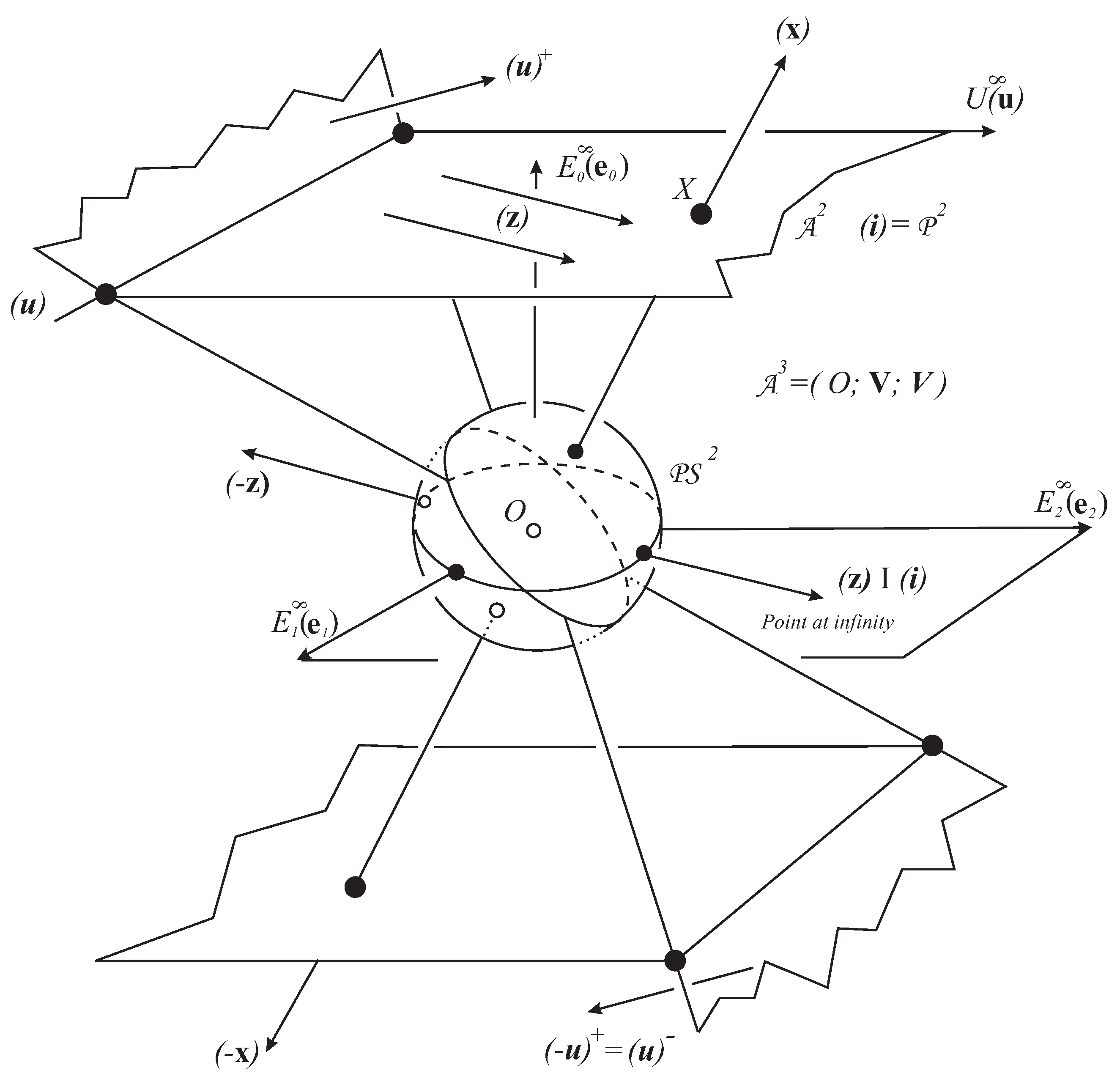

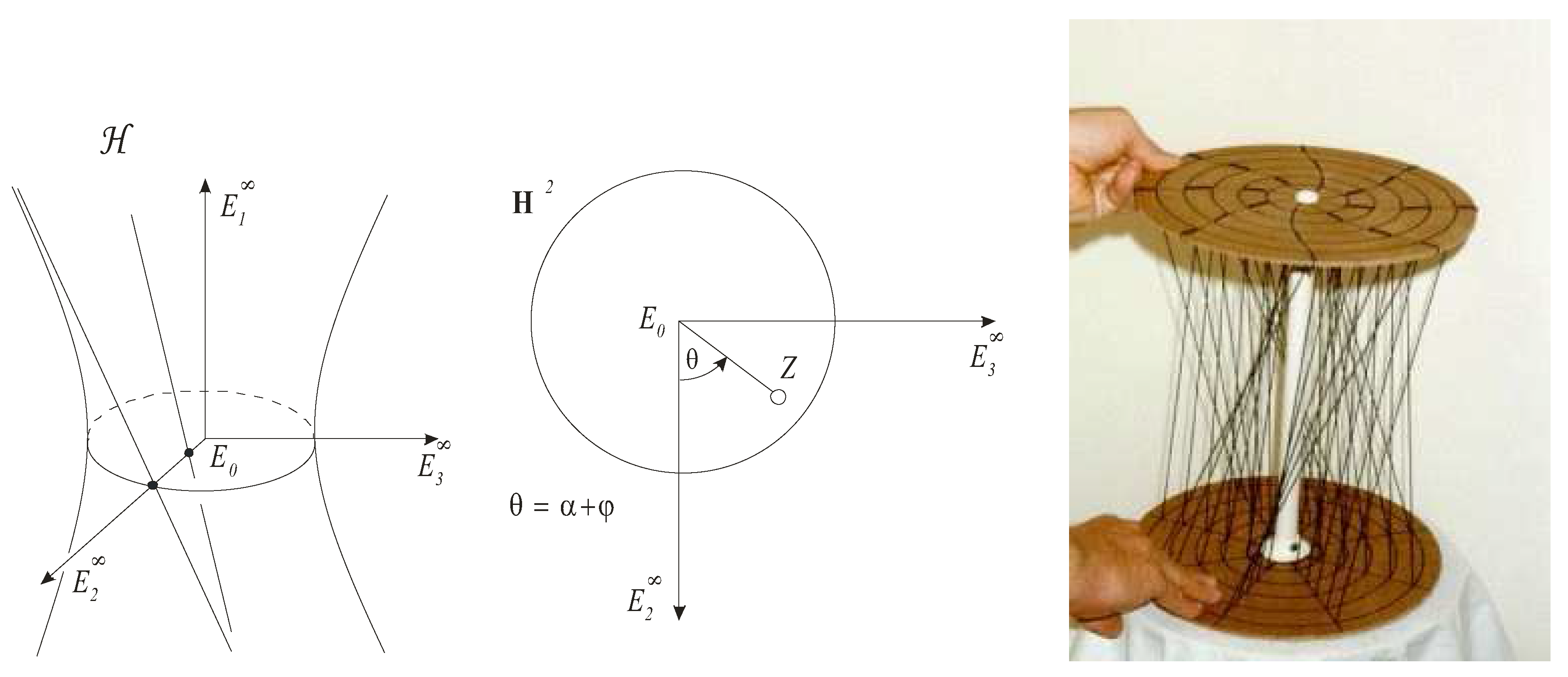
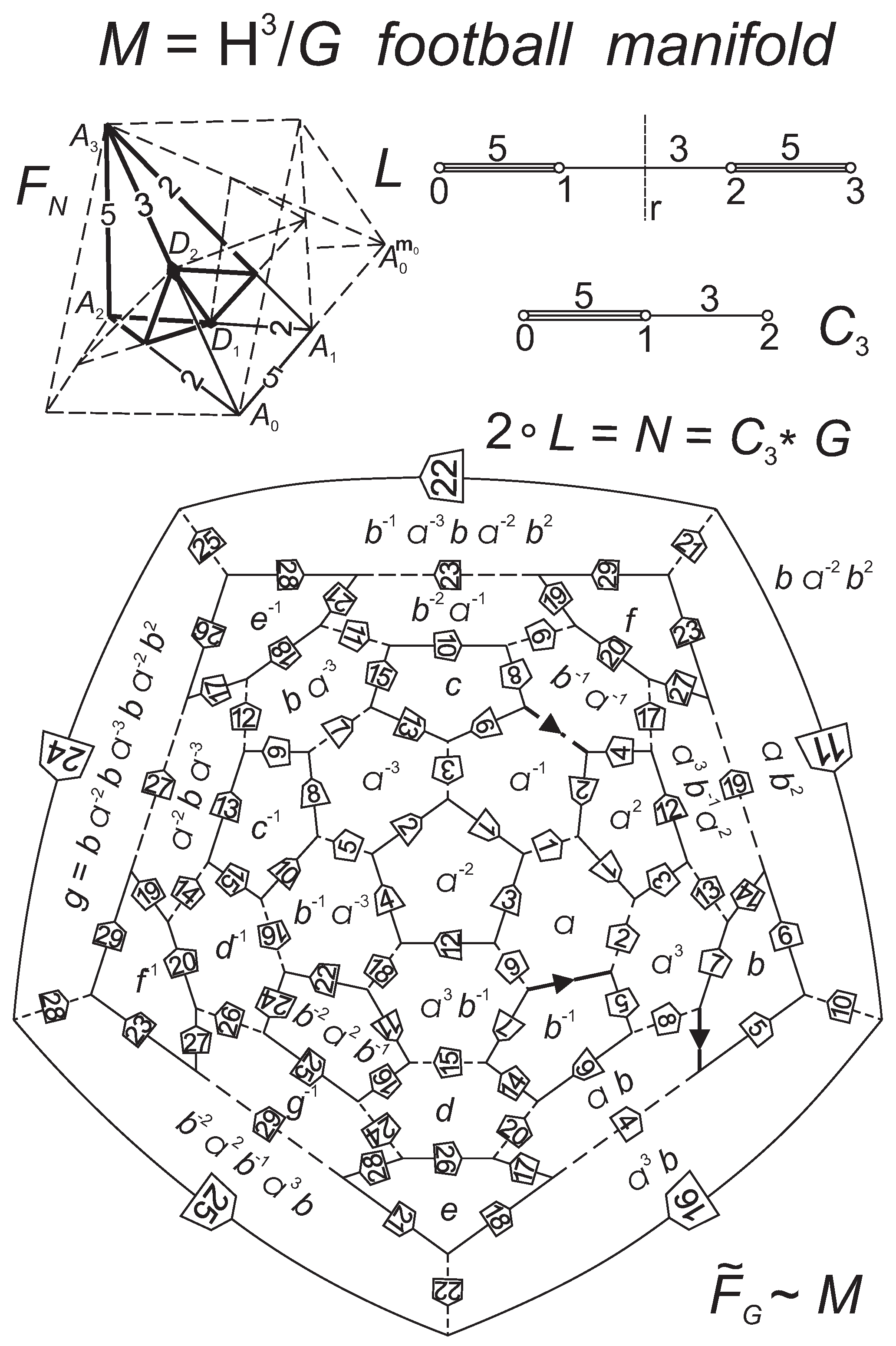
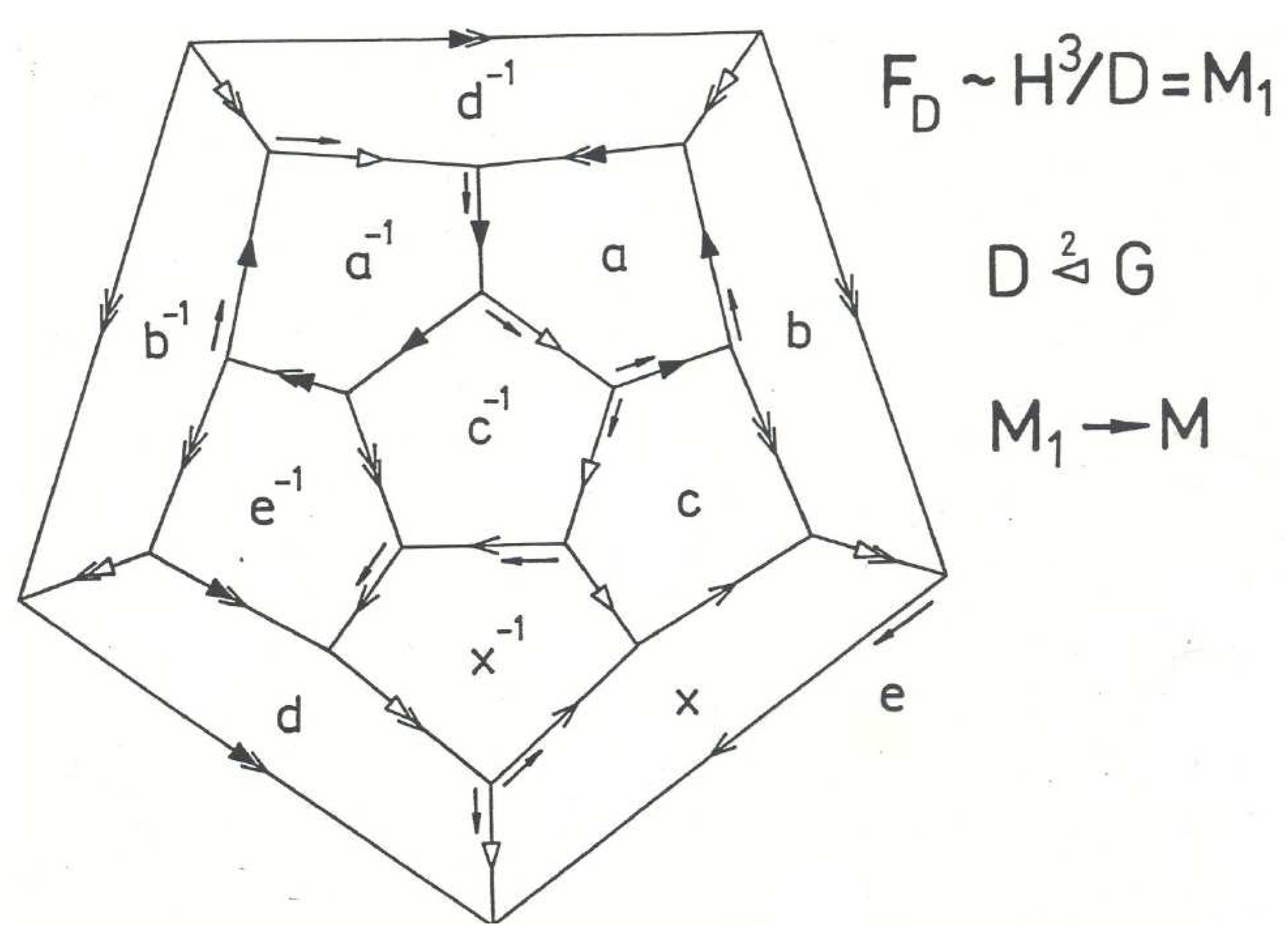
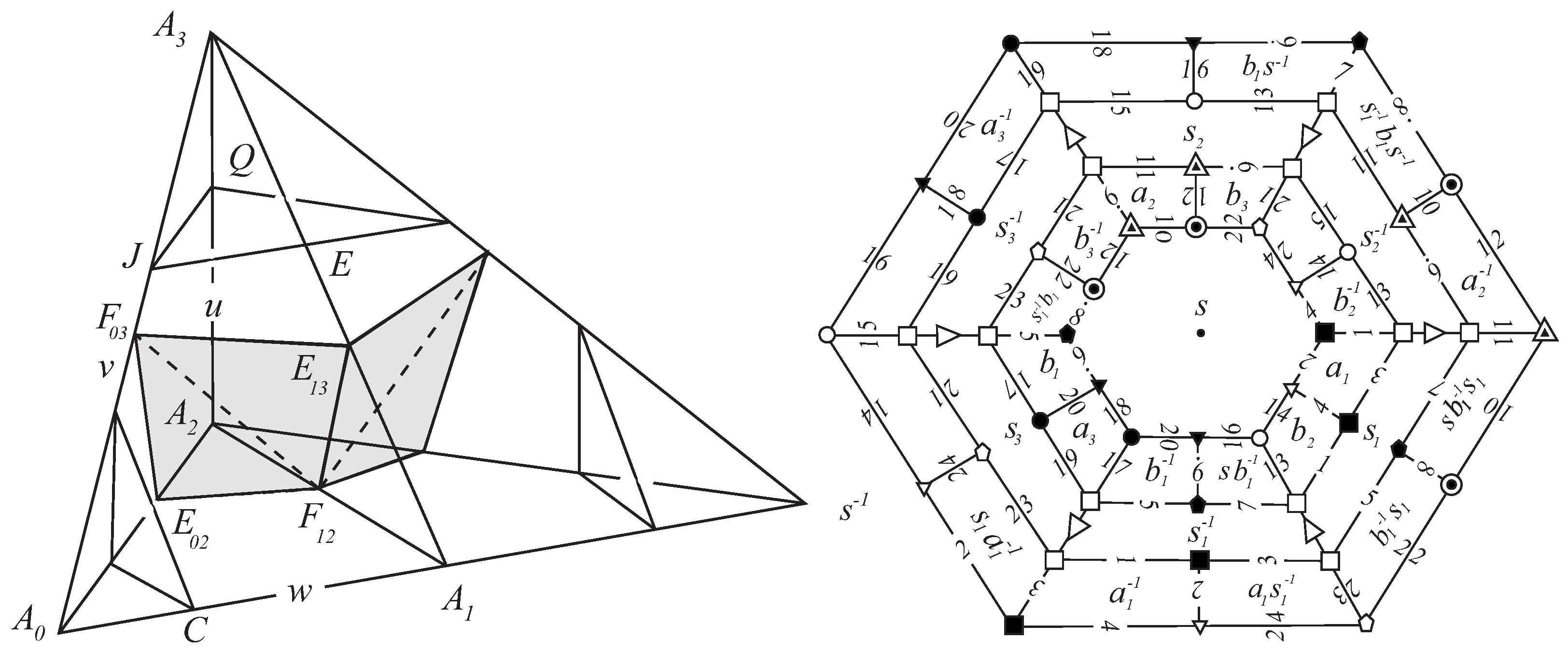
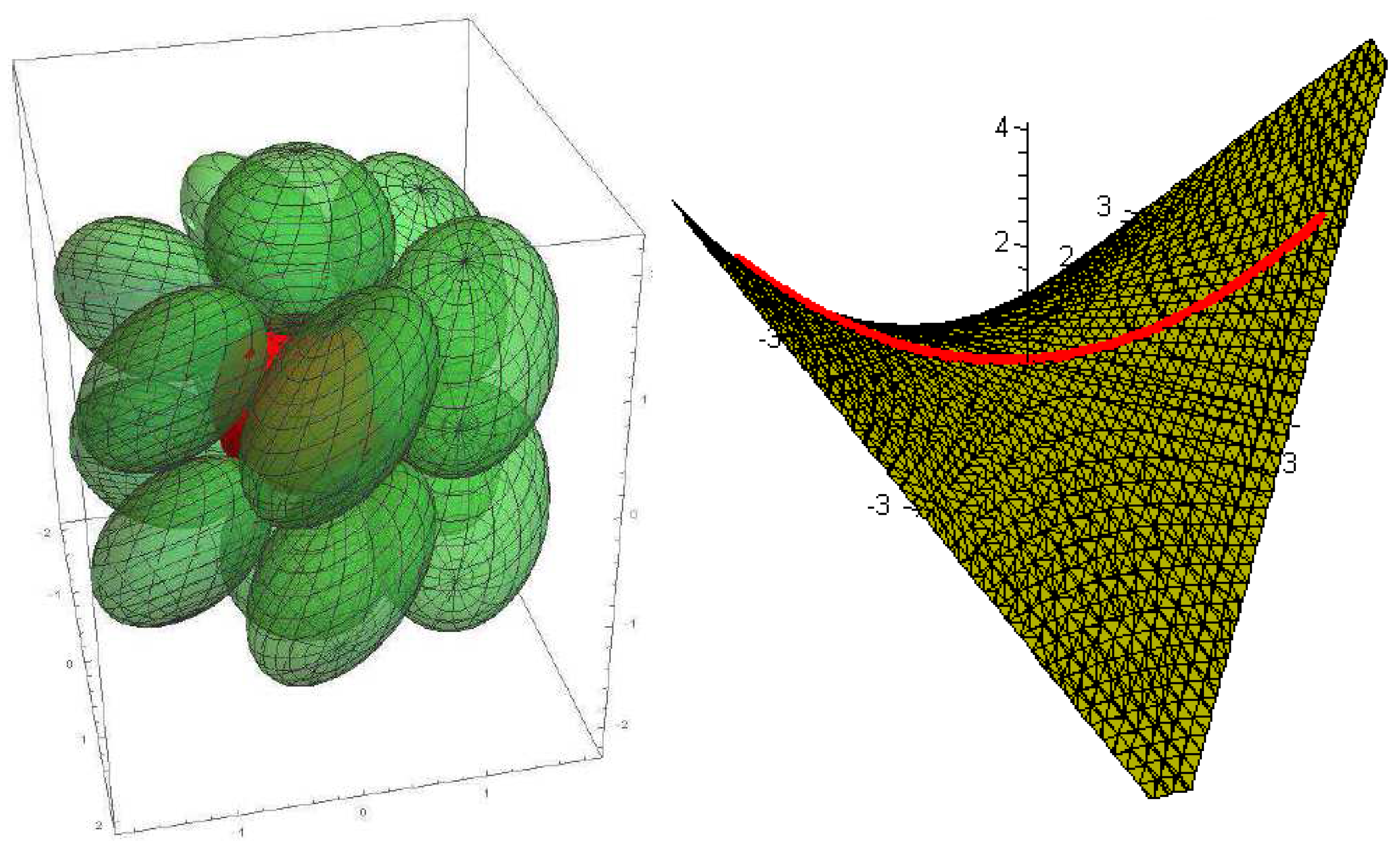

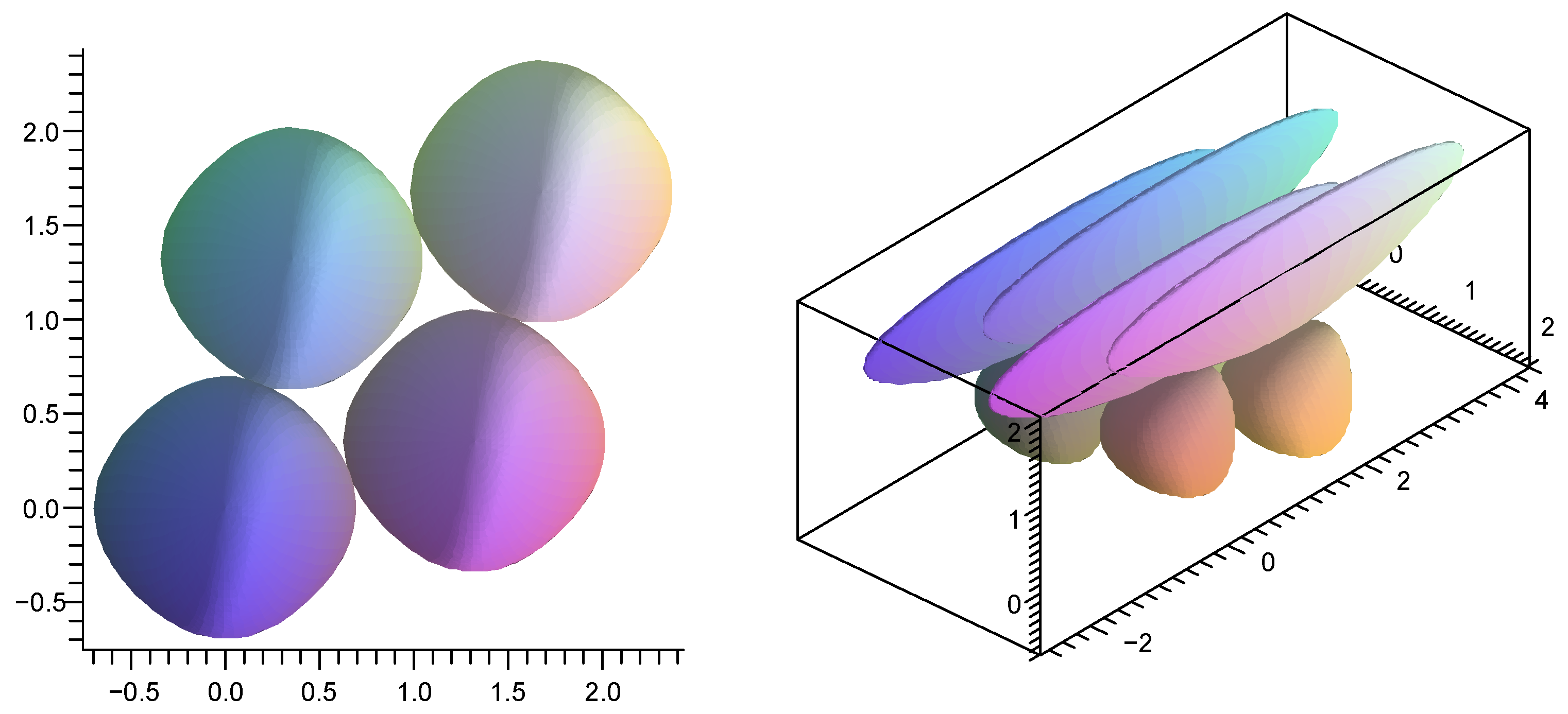
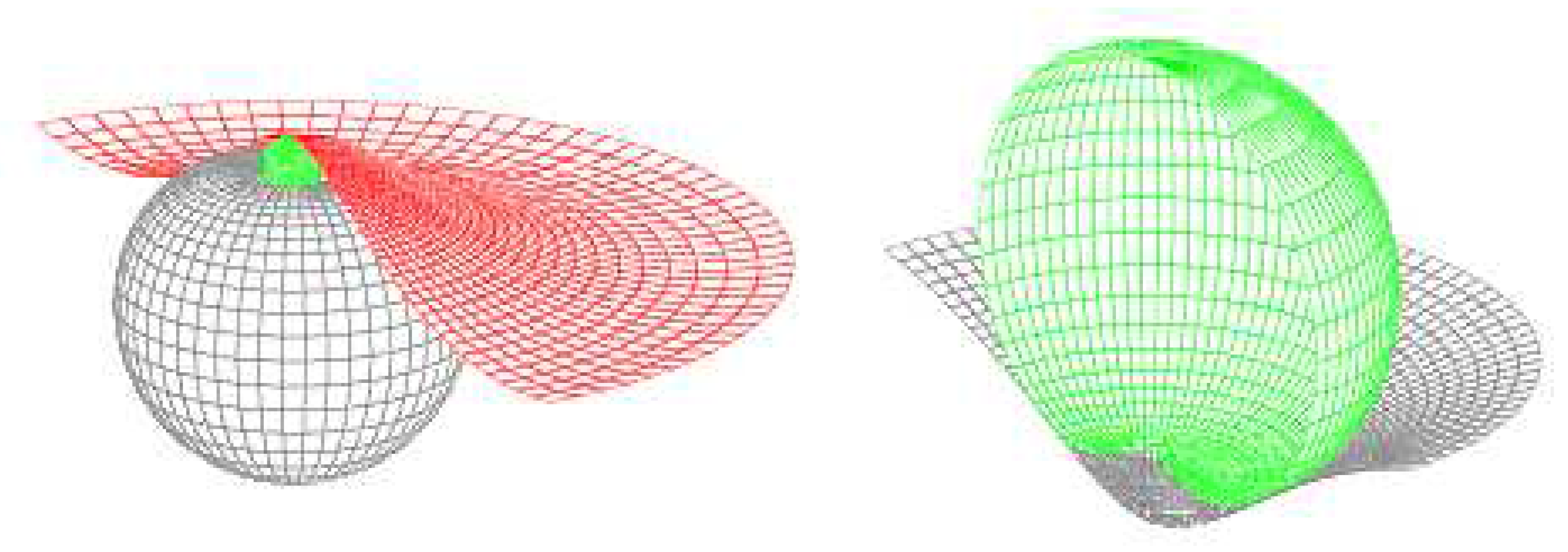
| Space X | Signature of Polarity or Scalar Product in | Domain of Proper Points of X in | The Group as a Special Collineation Group of |
|---|---|---|---|
| Coll preserving | |||
| Coll preserving | |||
| with skew line fibering | Universal covering of by fibering transformations | Coll preserving generated by plane reflections | |
| where , | Coll preserving , generated by plane reflections | ||
| with O-line bundle fibering | , O is a fixed origin | G is generated by plane reflections and sphere inversions, leaving invariant the O-concentric 2-spheres of | |
| with O-line bundle fibering | , half cone} by fibering | G is generated by plane reflections and hyperboloid inversions, leaving invariant the O-concentric half-hyperboloids in the half-cone by | |
| and parallel plane fibering with an ideal plane | Coll. of preserving and the fibering with 3 parameters | ||
| Null-polarity with parallel line bundle fibering F with its polar ideal plane | Coll. of preserving with 4 parameters |
© 2017 by the authors. Licensee MDPI, Basel, Switzerland. This article is an open access article distributed under the terms and conditions of the Creative Commons Attribution (CC BY) license (http://creativecommons.org/licenses/by/4.0/).
Share and Cite
Molnár, E.; Prok, I.; Szirmai, J. On Maximal Homogeneous 3-Geometries and Their Visualization. Universe 2017, 3, 83. https://doi.org/10.3390/universe3040083
Molnár E, Prok I, Szirmai J. On Maximal Homogeneous 3-Geometries and Their Visualization. Universe. 2017; 3(4):83. https://doi.org/10.3390/universe3040083
Chicago/Turabian StyleMolnár, Emil, István Prok, and Jeno Szirmai. 2017. "On Maximal Homogeneous 3-Geometries and Their Visualization" Universe 3, no. 4: 83. https://doi.org/10.3390/universe3040083
APA StyleMolnár, E., Prok, I., & Szirmai, J. (2017). On Maximal Homogeneous 3-Geometries and Their Visualization. Universe, 3(4), 83. https://doi.org/10.3390/universe3040083





